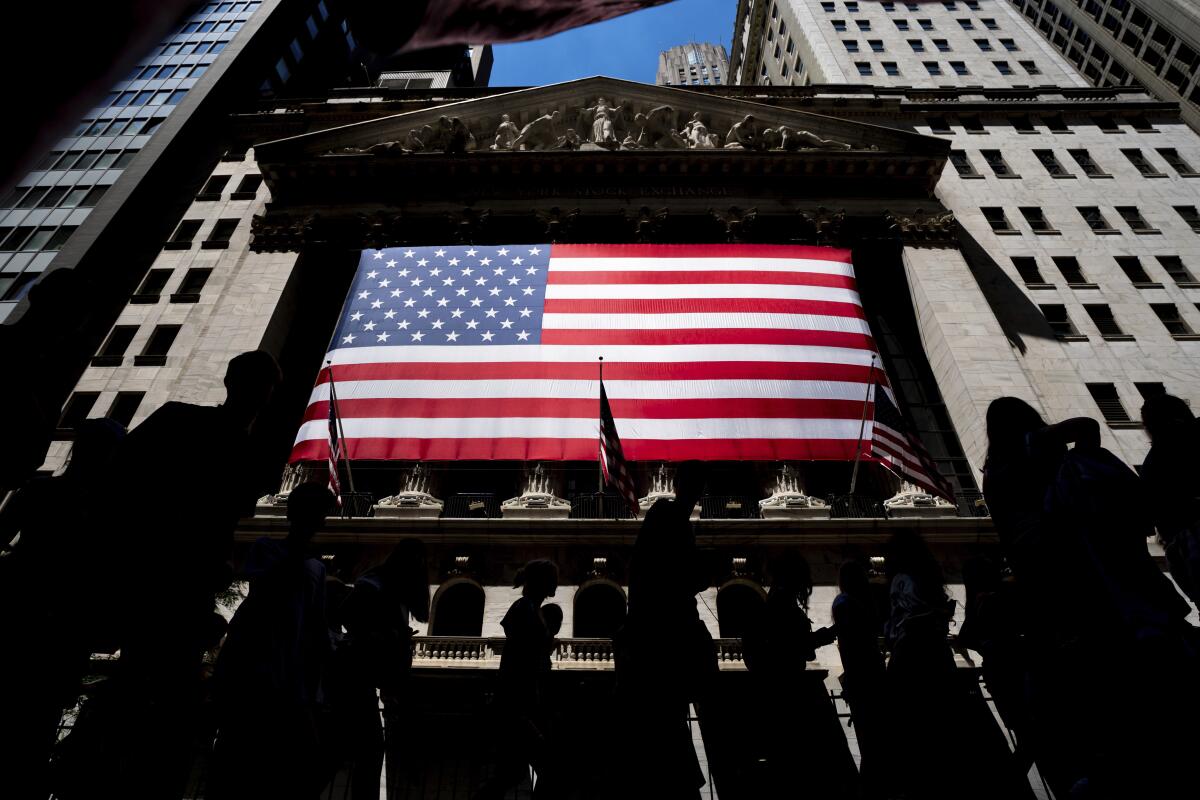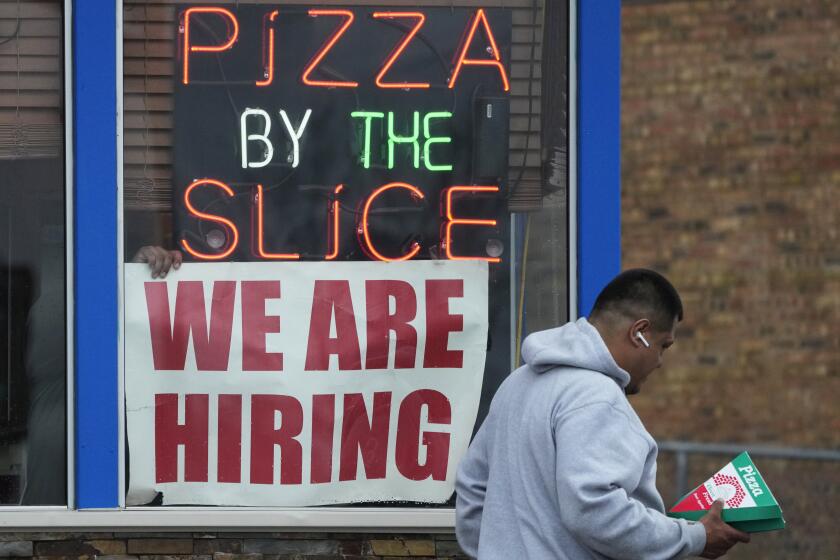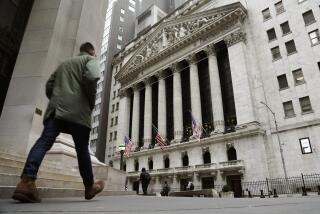Stocks dip after inflation data, Fed economists’ warning

- Share via
Stocks dipped to close an up-and-down Wednesday on Wall Street after the latest update on inflation and the latest warning of a possible recession.
The Standard & Poor’s 500 index fell 16.99 points, or 0.4%, to 4,091.95 after drifting between small gains and losses through the day. The Dow Jones industrial average slipped 38.29 points, or 0.1%, to 33,646.50, and the Nasdaq composite lost 102.54 points, or 0.9%, to close at 11,929.34.
The main focus on Wall Street for more than a year has been high inflation and how much painful medicine the Federal Reserve will have to dole out to contain it. A report Wednesday morning showed that prices at the consumer level were 5% higher last month than a year earlier.
That’s still well above the Federal Reserve’s comfort level, and some underlying trends within the data were also concerning. That weighed on financial markets. But on the upside for investors, the overall inflation number was still better than the 5.2% that economists expected. It also marked a continued slowdown from inflation’s peak last summer.
Altogether, the data sent stocks bouncing, though the swings weren’t nearly as severe as they’ve been over the last year. Roughly 65% of the stocks within the S&P 500 fell.
Traders are still largely betting the Fed will raise short-term interest rates by another quarter of a percentage point at its next meeting, according to data from CME Group. But they shaded some bets toward the possibility that the Fed will merely hold rates steady in May, something it has not done for more than a year.
Less expensive gas and lower food prices provided some relief to households that have struggled under the weight of surging prices for nearly two years.
“The Fed has every reason to take a pause and only a handful of reasons not to,” said Brian Jacobsen, senior investment strategist at Allspring Global Investments.
High rates can undercut inflation but only by bluntly slowing the entire economy. That raises the risk of a recession later on, while hurting prices for stocks, bonds and other investments in the meantime. The Fed has already raised rates at a furious pace over the last year, enough that it’s already hurt pockets of the economy and created strains within the banking system.
That has many investors and economists expecting at least a shallow, short recession to hit the economy later this year. If banks pull back on lending as a result of all the troubles in their industry, it could tighten the vise even further on the economy.
In minutes from the Fed’s last meeting, which were released Wednesday afternoon, the central bank said its staff economists forecast a pullback in lending will cause a “mild recession” starting later this year. Earlier, its staff had been forecasting subdued growth.
The bond market has been showing much more nervousness about a potential recession, and traders have built bets that the Fed will have to cut interest rates later this year in order to prop up the economy.
Yields fell Wednesday immediately after the inflation report, pared their losses later in the day and then dipped again following the release of the Fed’s minutes. The 10-year Treasury yield slipped to 3.41% from 3.43% late Tuesday. It helps set rates for mortgages and other important loans.
U.S. hiring in March reflects a resilient labor market and suggests that the Federal Reserve may see the need to keep raising interest rates this year.
The two-year Treasury yield, which moves more on expectations for the Fed, fell to 3.96% from 4.03%.
The stock market, meanwhile, has been showing comparatively less fear. It’s still up for the year so far, in part on hopes the Fed can pull off the tough balancing act of slowing the economy just enough to suffocate inflation but not so much as to cause a severe recession that undercuts corporate profits.
Companies later this week will begin reporting financial results for the first three months of the year. Expectations are low, with analysts forecasting the worst drop in S&P 500 earnings per share since the pandemic was crushing the economy in 2020. But many analysts also expect this to mark the bottom, with forecasts calling for a return to growth later this year.
American Airlines Group lost 9.2% after it gave a forecast for its first-quarter profit that fell short of some analysts’ expectations. It said it expected to report stronger results than it had earlier forecast, but it wasn’t high enough to meet many analysts’ estimates for earnings per share.
It had one of the largest losses within the S&P 500 and helped drag down other airline stocks. United Airlines Holdings slid 6.5%, and Delta Air Lines shed 2.4%.
Also weighing on Wall Street on Wednesday was the fact that inflation still remains high, even if it is slowing. And underneath the surface, inflation also remains sticky after ignoring food and energy costs. That’s something called “core inflation” and can offer a better picture of where trends are heading.
That has some investors girding for the “higher for longer” interest rates that the Fed has long been warning about.
“The Fed’s mandate of 2% inflation is a distant dream, and interest rates have to remain somewhat restrictive till we see meaningful improvement in the trajectory of core inflation,” said Gargi Chaudhuri, head of IShares Investment Strategy, Americas.
AP writers Yuri Kageyama and Matt Ott contributed to this report.
More to Read
Inside the business of entertainment
The Wide Shot brings you news, analysis and insights on everything from streaming wars to production — and what it all means for the future.
You may occasionally receive promotional content from the Los Angeles Times.












